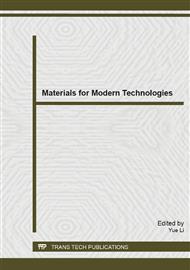p.3
p.8
p.12
p.18
p.25
p.31
p.39
p.45
Effect of Process on the Dielectric Properties of BaTiO3-Based X9R Ceramics
Abstract:
The effect of milling time and sintering process on the dielectric properties of BaTiO3-based X9R ceramics was investigated. The characterization of the raw powders and the sintered ceramic was carried out by X-ray diffraction and scanning electron microscopy. The particle size distribution of the mixed powders was examined by Laser Particle Size Analyzer. The results shown that with the milling time extended, the Cruie Peak was depressed, or even disappeared. Moreover, with the rise of sintering temperature, the dielectric constant of the ceramics increased and the dielectric loss decreased gradually. Eventually, by milling for 11h and sintering at 1090°Cfor 2h, good dielectric properties were obtained, which were ε25°C≥ 2526, εr/εr25°C≤± 12% (–55~200°C), tanδ≤1.12% (25°C).
Info:
Periodical:
Pages:
18-24
Citation:
Online since:
April 2014
Authors:
Keywords:
Price:
Сopyright:
© 2014 Trans Tech Publications Ltd. All Rights Reserved
Share:
Citation:


